

Participatory Rural Appraisal (PRA)
March 14, 2022, Evaluation Observatory

What is Participatory Rural Appraisal?
The father of Participatory Rural Appraisal Techniques, Robert Chambers has referred to PRA as a 'growing family of approaches and methods' which aim to 'enable local people to share, enhance and analyse their knowledge of life and conditions, to plan, and to act. "1 Simply put, these methods focus on local people's empowerment through their participation in rural development; and prioritize local people's voices, concerns and assessments as against those of policy makers, funders and program-managers.
The term appraisal has increasingly acquired a scope beyond 'planning' and 'acting', to also include empowering local communities to involve themselves in participatory 'monitoring' and 'evaluation'.
What is the need for Participatory Rural Appraisal?
Conventionally, Monitoring and Evaluation as a practice is a way to show donor agencies and external funders the extent to track how much progress the program has made towards its objectives, highlight any ongoing problems, and facilitate course correction methods. However, such methods have upward accountability. This means that program strategy, indicators, and a judgement of whether the program was a success or failure is determined by those who are on top of the ladder, rather than those who need and experience the benefits of the program. (Institute for Development Studies, n.d.).
In the 1990's, PRA evolved from Rapid Rural Appraisal methods, when the need for people participation in rural development became evident2. Though RRA techniques did focus on incorporating the voices of local people; however, it still served external accountability interests, over local interests. Recognizing this, in the 1990s, there was a shift in developmental approaches from top-down to bottom-up, centralized standardization to (adaptation to) local diversity, and from a 'blueprint approach' to those of learning processes3. Considering RRA's elicitive or 'extractive nature', the need to involve the local community in planning and decision making, became important.

Source: (Freudenberger, n.d.)4
|
Principles of Participatory Rural Appraisal |
Optimal ignorance and appropriate imprecision i.e. not extracting or measuring more than what is needed |
| Critical self-awareness about attitudes and behaviour; building learning and improvement into every experience. | |
| Changing behaviour and attitudes, from dominating to facilitating, and empowering and enabling them to conduct their analysis | |
| Reversal of learning, i.e., learning from, with and by local | |
| Prioritization of local voices ensure that external personal biases can be eliminated. | |
| Rapid progressive learning- flexible, exploratory, interactive, inventive | |
| Triangulation- using different methods, sources, and disciplines across contexts to get closer to the truth. | |
| Direct face to face contact in the field | |
| Seeking diversity and differences |
(Information Source: Chandra, 2010) 5
What goes into the process to conduct a Participatory Rural Appraisal?6
Step 1: Establishing Rapport with key informants (Panchayat functionaries, SHG leaders, Anganwadi Workers etc.) in the village and seeking their cooperation and support in PRA.
Step 2: A Transect walk is then conducted across a said cross-section of the village to understand the village topography, resource distribution etc. through direct observations in consultation with the local villagers.
Step 3: Get the villagers to draw a social map of the village on the ground, which includes information like demographics, social particulars, infrastructure, school children. etc
Step 4: Ask people to list their problems on a card and probe and cross-check their problems once they finish.
Step 5: Ask them to prioritize their problems if they have any to be taken up for action.
Step 6: Conduct discussions with the larger community about ways to resolve problems identified after prioritization.
List of recommended resources:
For a broad overview
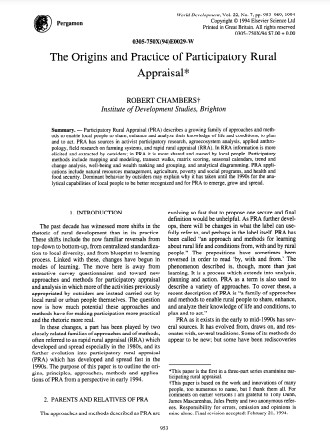
-
An excellent starting point for anyone new to PRA techniques, this paper written by Robert Chambers, describes Participatory Rural Appraisal (PRA) methods and compares it with the Rapid Rural Appraisal methods (RRA). It also discusses various participatory methods in context to their applications to areas like Natural Resources Management, Agriculture, Poverty and Social Programs.
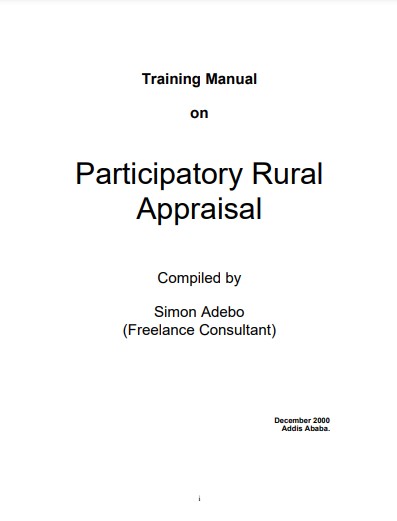
-
Compiled by Simon Adebo, this manual introduces the concept of PRA and RRA. It also has a detailed discussion on methods and techniques for PRA and provides guidelines to practitioners.

-
Written by Ganesh Chandra, this paper provides information on the definition and principles of PRA. It also discusses various PRA approaches and their applications.
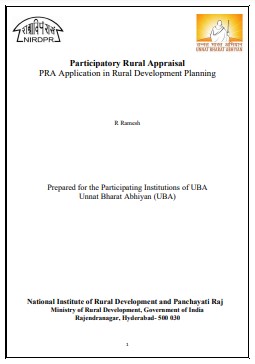
-
Written by R. Ramesh of the National Institute of Rural Development and Panchayati Raj, this document describes PRA, it's functioning and benefits for the practitioners who have a scarce understanding of rural development in the Indian context.
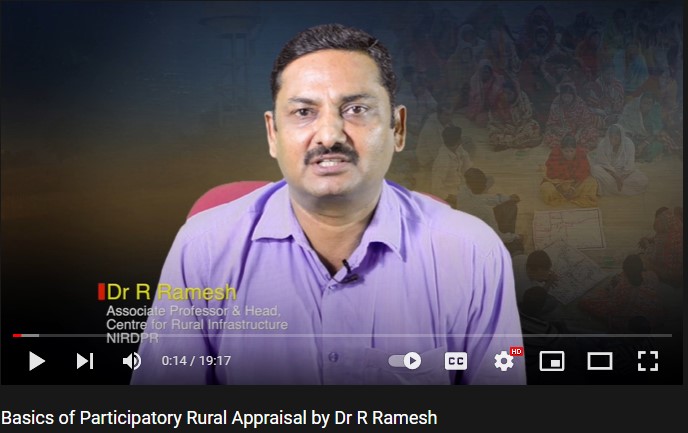
-
Presented by R. Ramesh, this video explains the basic concept of PRA and guides practitioners on conducting PRA.

-
Published by Vidyamitra, this video explains the objectives and principles of PRA. It also explains steps in carrying out PRA. Part II of the video explains methods like social map, land use map, resource map, farm map etc.
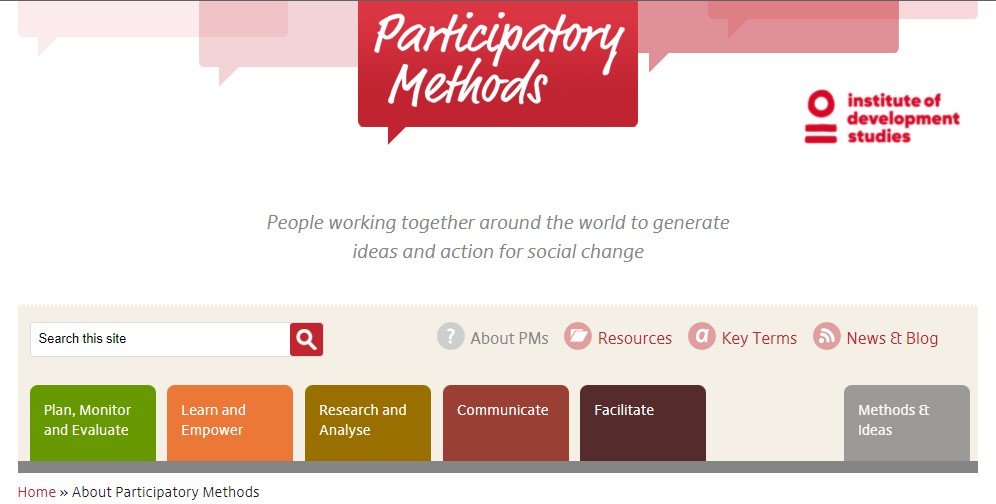
-
This website, from the Institute of Development Studies is a one-stop portal to learn, and spot resources about Participatory Methods. It is an excellent resource for anybody who is new to PRA, and wishes to explore the field at their own pace. .
For in depth understanding
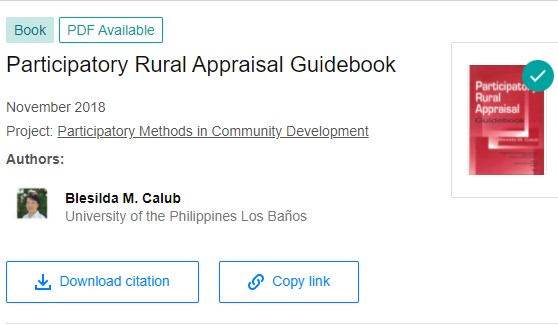
-
This book aims to enhance the application of participatory methods in development work. It is written for local people, communities and organizations in the government and non-government sectors involved in implementing and promoting participatory methods in rural development.
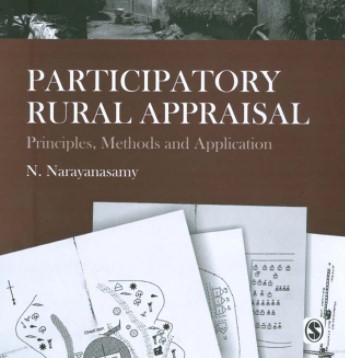
-
Published by SAGE publications, this book has in-depth discussions on various aspects of PRA. It provides a comprehensive understanding of the concept to aid students, teachers, researchers, NGO workers and donors.
Case Study
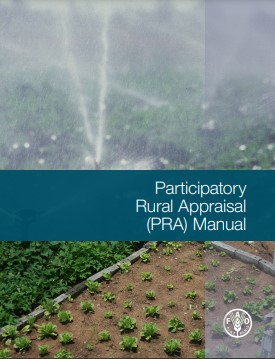
-
Developed by FAO, this document records the methodologies to be employed in determining the situation, needs, constraints, motivation and opportunities for farmers and their households. It also presents the tools which can help researchers identifying deep-seated problems and opportunities that impact the pace of technology adaptation and transfer within the agricultural sector

-
Developed by the Meghalaya Basin Development Authority, this video guides practitioners on conducting PRA with the help of a community-led landscape management project.
Toolkits
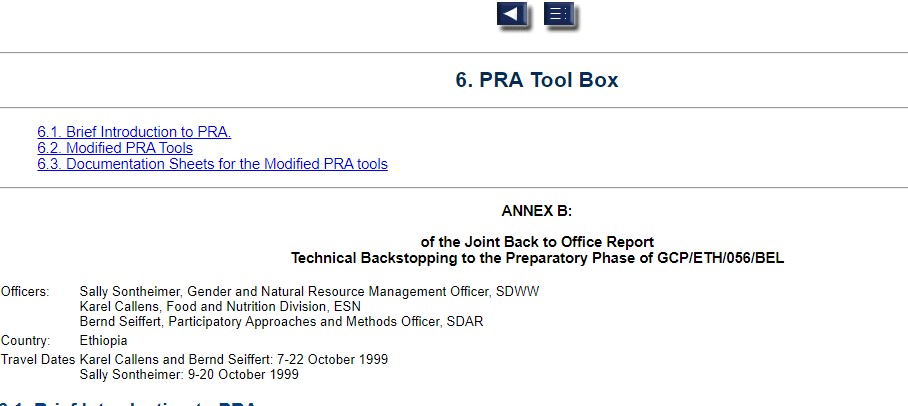
-
Developed by FAO, this web page provides guidance on various tools for conducting PRA, including key questions and steps for conducting PRA.

-
Prepared by National Institute Rural Development, this document guides the use of various tools for data collection and rapport building and data collection at the village level.
Further Reading
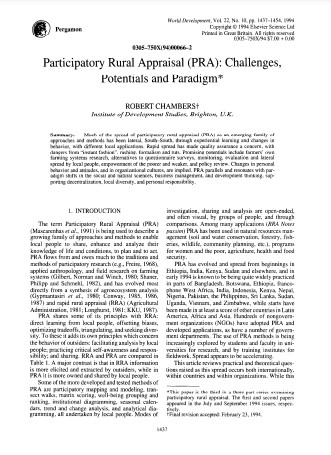
-
Written by Robert Chambers, this paper reviews practical and theoretical questions raised on PRA and examines its approaches and methods based on the writer's personal experience and judgement.
References:
Chambers R. (1994). Participatory Rural Appraisal (PRA): Challenges, Potentials and Paradigm. Pergamon.http://sergiorosendo.pbworks.com/f/Chambers+on+the+challenges+and+potential+of+PRA.pdf
Chambers R. (1994). The Origins and Practice of Participatory Rural Appraisal. Pergamon.https://entwicklungspolitik.uni-hohenheim.de/uploads/media/Day_4_-_Reading_text_8.pdf
Chandra G. (2010). Participatory Rural Appraisal. ResearchGate.https://www.researchgate.net/publication/265127750_Participatory_Rural_Appraisal
Freudenberg K. (n.d.). Rapid Rural Appraisal (RRA) and Participatory Rural Appraisal (PRA). CRS.https://www.crs.org/sites/default/files/tools-research/rapid-rural-appraisal-and-participatory-rural-appraisal.pdf
Ramesh R. (2019, June 18). Basics of Participatory Rural Appraisal by Dr R Ramesh [video]. YouTube. https://www.youtube.com/watch?v=gvm1Td6Ve9o
Raut S. (n.d.). Methodology for Participatory Rural Appraisal. Unnat Bharat Abhiyan. https://unnatbharatabhiy-an.gov.in/app/webroot/files/presentations/uba 2.0/Methodology for Participatory Rural Appraisal(PRA)_Dr. Sandeep Kumar Raut.pdf
You may also like

Big Data: An Introduction and Application in the Social Sector
August 30, 2021

Building an Evaluation Ecosystem: Perspectives from Evaluation Associations - Key Takeaways from the Webinars
August 30, 2021
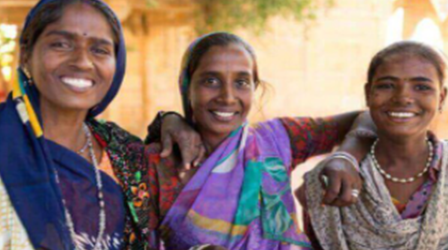
GENSA Celebrates One Year, and Keynote by Katherine Hay
August 30, 2021

